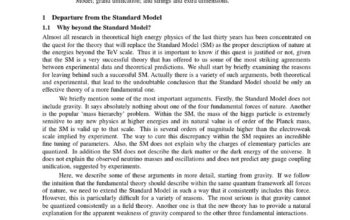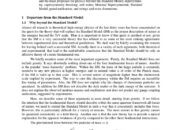In the vast expanse of the cosmos, quasars present as beacons of brightness, emitting torrents of energy from the regions surrounding supermassive black holes. These luminous entities hold the potential to revolutionize our understanding of astrophysics and cosmology. The intrigue surrounding these objects intensifies when considering the concept of alignment among divergent quasars—a phenomenon that prompts a reevaluation of our comprehension of cosmic structure and order amidst chaos. The exploration of quasars and their alignments offers not only a glimpse into the dynamics of the universe but also ignites a spark of curiosity and wonder about the fundamental nature of celestial phenomena.
The fundamental nature of a quasar is rooted in the gravitational forces exerted by supermassive black holes, which reside at the cores of galaxies. As material spirals into these gravitational maws, it forms an accretion disk, generating immense friction and heat, which consequently leads to the emission of electromagnetic radiation. This phenomenon makes quasars some of the most visible objects in the universe, observable even at extraordinary distances. The great distances involved in quasar observation provide crucial insights into the early universe, as the light we detect from them takes billions of years to reach our telescopes.
Quasars are typically characterized by their vast luminosity and high redshift, making them indispensable tools for astronomers. The redshift phenomenon indicates the extent to which an object is receding from an observer, thereby offering information about the universe’s expansion. However, the emergence of alignments within differently oriented quasars invites a more nuanced discussion regarding cosmic topology and spatial distribution. Such alignments may provide evidence for underlying physical principles that govern the orientation of these distant phenomena.
One pivotal study suggests that quasars are not randomly distributed throughout the universe, but rather, exhibit clustering behavior that may reflect larger-scale structures, such as filaments and voids of dark matter. The implications of discovering order among seemingly random and divergent quasars are profound. An emergent pattern reminiscent of cosmic web architecture suggests that structures within the universe are not merely a product of stochastic processes but may instead be shaped by fundamental physical laws and historical gravitational interactions.
The gravitational lensing effect poses an additional layer of complexity when examining quasar alignments. When a massive object, such as a galaxy, lies between an observer and a distant quasar, it can bend the light emanating from the quasar, resulting in multiple images appearing at different locations in the sky. This not only reinforces the idea of alignment but also allows astronomers to delve into the distribution of matter in the universe, even in regions obscured from direct observation. The interplay between quasars and gravitational lensing serves as a critical reminder of the interconnectivity of celestial bodies, echoing the interconnected web of the universe.
Delving further into the implications of quasar alignment reveals potential connections to the enigmatic phenomena of dark energy and dark matter. These ubiquitous components, constituting approximately 95% of the universe’s total energy density, remain poorly understood. If quasars indeed exhibit alignment due to gravitational influences from dark matter structures, it could illuminate the intricate relationship between visible and invisible components of the cosmos. Understanding the orientation of quasars may eventually provide insights into the nature and distribution of both dark energy and dark matter, expanding our cosmic narrative.
The methods adopted to scrutinize these alignments include advanced astronomical techniques such as cross-correlation studies, spectroscopic measurements, and statistical modeling. By applying these techniques to a plethora of observational data, researchers strive to ascertain the viability of alignment theories. The advent of powerful telescopes, such as the James Webb Space Telescope, emphasizes the promise of refined observational capabilities, allowing for unprecedented examinations of both quasars and their environments.
Engaging with the quasar alignment paradigm invites a reconsideration of current astrophysical models. Many cosmological theories, including those concerned with cosmic inflation and structure formation, may necessitate recalibration in light of emerging evidence regarding quasar orientation. This presents an intriguing opportunity to transcend traditional notions, prompting exploration of innovative theoretical frameworks that encapsulate the complexities inherent in quasar distributions.
Moreover, the philosophical implications of order within chaos introduce a fascinating dimension to this discourse. The concept of emergent order—a principle that suggests complex systems can develop organized structures from simple rules—may resonate with the alignment of quasars. This interplay between order and chaos reiterates the symbiotic relationship between fundamental physical laws and celestial dynamics, compelling a deeper reflection on our existential place within this grand cosmic framework.
In conclusion, the study of quasar alignments serves as an illuminating focal point in contemporary astrophysics. The promise of uncovering a hidden order amidst the chaotic vastness of the universe presents fertile ground for future research and exploration. Through continued inquiry into the behavior and distribution of quasars, astronomers may reveal profound truths about the fabric of reality, ultimately reshaping our understanding of the universe. As we advance into this new era of astrophysics, the enigmatic nature of quasars beckons us to question, explore, and appreciate the intricate tapestry of existence that connects all celestial bodies, fostering an ongoing curiosity that propels the quest for knowledge forward.












